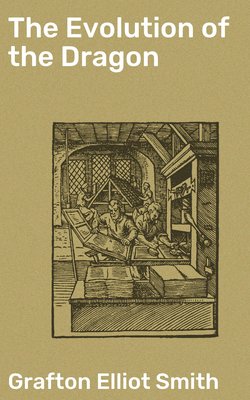Читать книгу The Evolution of the Dragon - Grafton Elliot Smith - Страница 11
Оглавление[41] "The Significance of Incense and Libations in Funerary and Temple Ritual," Zeitschrift für Ägyptische Sprache und Alteriumskunde, Bd. 50, 1912, p. 69.
[42] Mr. Blackman here quotes the actual word in hieroglyphics and adds the translation "god's fluid" and the following explanation in a footnote: "The Nile was supposed to be the fluid which issued from Osiris. The expression in the Pyramid texts may refer to this belief—the dead" [in the Pyramid Age it would have been more accurate if he had said the dead king, in whose Pyramid the inscriptions were found] "being usually identified with Osiris—since the water used in the libations was Nile water."
[43] The voluminous literature relating to Osiris will be found summarized in the latest edition of "The Golden Bough" by Sir James Frazer. But in referring the reader to this remarkable compilation of evidence it is necessary to call particular attention to the fact that Sir James Frazer's interpretation is permeated with speculations based upon the modern ethnological dogma of independent evolution of similar customs and beliefs without cultural contact between the different localities where such similarities make their appearance.
The complexities of the motives that inspire and direct human activities are entirely fatal to such speculations, as I have attempted to indicate (see above, p. 195). But apart from this general warning, there are other objections to Sir James Frazer's theories. In his illuminating article upon Osiris and Horus, Dr. Alan Gardiner (in a criticism of Sir James Frazer's "The Golden Bough: Adonis, Attis, Osiris; Studies in the History of Oriental Religion," Journal of Egyptian Archæology, Vol. II, 1915, p. 122) insists upon the crucial fact that Osiris was primarily a king, and that "it is always as a dead king," "the rôle of the living king being invariably played by Horus, his son and heir".
He states further: "What Egyptologists wish to know about Osiris beyond anything else is how and by what means he became associated with the processes of vegetable life". An examination of the literature relating to Osiris and the large series of homologous deities in other countries (which exhibit prima facie evidence of a common origin) suggests the idea that the king who first introduced the practice of systematic irrigation thereby laid the foundation of his reputation as a beneficent reformer. When, for reasons which I shall discuss later on (see p. 220), the dead king became deified, his fame as the controller of water and the fertilization of the earth became apotheosized also. I venture to put forward this suggestion only because none of the alternative hypotheses that have been propounded seem to be in accordance with, or to offer an adequate explanation of, the body of known facts concerning Osiris.
It is a remarkable fact that in his lectures on "The Development of Religion and Thought in Ancient Egypt," which are based upon his own studies of the Pyramid Texts, and are an invaluable storehouse of information, Professor J. H. Breasted should have accepted Sir James Frazer's views. These seem to me to be altogether at variance with the renderings of the actual Egyptian texts and to confuse the exposition.
[44] Dr. Alan Gardiner, quoted in my "Migrations of Early Culture," p. 42: see also the same scholar's remarks in Davies and Gardiner, "The Tomb of Amenemhēt," 1915, p. 57, and "A new Masterpiece of Egyptian Sculpture," The Journal of Egyptian Archæology, Vol. IV, Part I, Jan., 1917.
[45] See J. Wilfrid Jackson, "Shells as Evidence of the Migrations of Early Culture," 1917, Manchester University Press.
